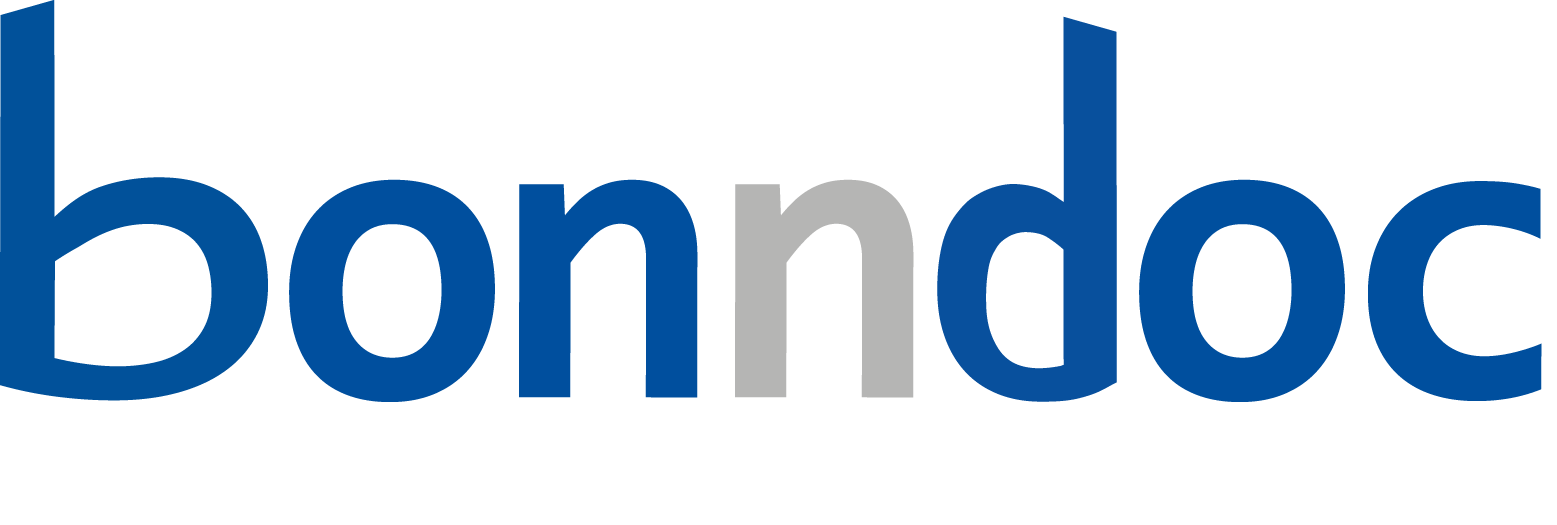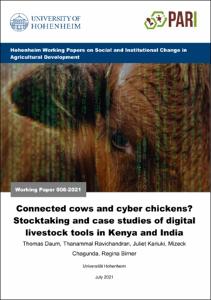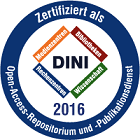Connected cows and cyber chickens?Stocktaking and case studies of digital livestock tools in Kenya and India

Connected cows and cyber chickens?
Stocktaking and case studies of digital livestock tools in Kenya and India

| dc.contributor.author | Daum, Thomas | |
| dc.contributor.author | Ravichandran, Thanammal | |
| dc.contributor.author | Kariuki, Juliet | |
| dc.contributor.author | Chagunda, Mizeck | |
| dc.contributor.author | Birner, Regina | |
| dc.date.accessioned | 2023-06-14T13:51:53Z | |
| dc.date.available | 2023-06-14T13:51:53Z | |
| dc.date.issued | 07.2021 | |
| dc.identifier.uri | https://hdl.handle.net/20.500.11811/10887 | |
| dc.description.abstract | There are high hopes that digital tools can help to reduce constraints to livestock development, which in turn promises to alleviate poverty and ensure food and nutrition security. Yet, little systematic evidence exists on the state of digital livestock in low- and middle-income countries and, subsequently, whether such high hopes are justified. In this paper, we combine a review of digital livestock tools in India and Kenya with three “on-the-ground” case studies: Herdman, a tool for Indian dairy organizations working with small-scale livestock keepers, facilitating data collection and supervision of field agents; Farmtree, a tool supporting medium-scale livestock keepers in India to manage their herds, and iCow, an e-extension tool for farmers in Kenya. For the review, we develop a conceptual framework that distinguishes different types of digital livestock tools: 1) “simple digital tools”, providing generic information, 2) “smart digital tools”, providing tailored information based on data entered by livestock keepers, 3) “smart and connected digital tools”, using data from sensors, 4) “smart, connected and automated digital systems”, which are coupled with robots, allowing for automation, 5) “digital tools for value chains”, which enable the integration of value chain actors. The results suggest that digital tools provide many new options to address constraints to livestock development. So far, most tools are “simple digital tools”, followed by “smart digital tools”. Few tools are “smart and connected”. “Smart digital tools” that only require smartphone ownership are the “sweet spot” for supporting digital livestock development, however, even embodied “smart and connected digital tools” can be of relevance for small-scale livestock keepers with appropriate organizational models. Most digital tools focus on dairy production, suggesting neglect of other types of livestock, and there are few tools for pastoralists. While digital tools are no silver bullets – and come with some new challenges such as data security and sovereignty concerns - they are likely to become a key pillar of livestock development in the near future. | en |
| dc.format.extent | 35 | |
| dc.language.iso | eng | |
| dc.relation.ispartofseries | Hohenheim Working Papers on Social and Institutional Change in Agricultural Development ; 008-2021 | |
| dc.rights | In Copyright | |
| dc.rights.uri | http://rightsstatements.org/vocab/InC/1.0/ | |
| dc.subject | Africa | |
| dc.subject | India | |
| dc.subject | Agricultural production | |
| dc.subject | Livestock | |
| dc.subject | Digitalization | |
| dc.subject.ddc | 302.23 Medien (Kommunikationsmittel), Medienwissenschaft | |
| dc.subject.ddc | 630 Landwirtschaft, Veterinärmedizin | |
| dc.title | Connected cows and cyber chickens? | |
| dc.title.alternative | Stocktaking and case studies of digital livestock tools in Kenya and India | |
| dc.type | Arbeitspapier | |
| dc.publisher.name | University of Hohenheim | |
| dc.publisher.location | Hohenheim | |
| dc.rights.accessRights | openAccess | |
| dc.relation.doi | https://doi.org/10.13140/RG.2.2.29618.53444 | |
| ulbbn.pubtype | Zweitveröffentlichung |




